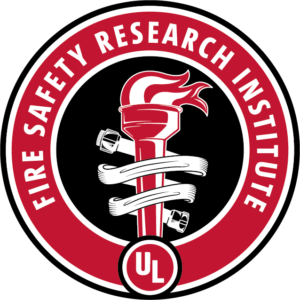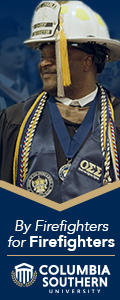UL’s Fire Safety Research Institute Releases New Hose Stream Prop and Hands-On Training Toolkit
February 8, 2022
 UL’s Fire Safety Research Institute (FSRI) has released an all-new hands-on training toolkit focused on hose stream mechanics, giving fire departments an innovative new way to put research into practice. This toolkit is designed to facilitate realistic training and includes all the information needed to construct and utilize FSRI’s Hose Stream Prop – everything from prop designs, video demos, training lesson plans covering air entrainment principles in hose streams, and water distribution tactics in structures.
UL’s Fire Safety Research Institute (FSRI) has released an all-new hands-on training toolkit focused on hose stream mechanics, giving fire departments an innovative new way to put research into practice. This toolkit is designed to facilitate realistic training and includes all the information needed to construct and utilize FSRI’s Hose Stream Prop – everything from prop designs, video demos, training lesson plans covering air entrainment principles in hose streams, and water distribution tactics in structures.
The idea for this innovative Hose Stream Prop was sparked when FSRI research studies began to yield thought-provoking findings around the fundamentals of hose stream mechanics – specifically air entrainment and water mapping. These concepts are the ground-level building blocks needed to understand the impact of varying suppression tactics on the fireground. From these findings, FSRI research engineers began by building a prototype training prop to visualize and interactively demonstrate these concepts.
With the help of trusted fire service partners and live training demonstrations throughout the country, FSRI designed several enhancements to optimize usability and increase the suppression concepts able to be visualized with the prop, leading up to the final version and current construction plans. FSRI is proud to share these plans along with instructional videos and lesson plans for fire departments to incorporate into their training protocols.
By leveraging this hands-on toolkit, fire departments will enable their members to learn:
- How to manage air entrainment and effectively distribute water and map the surfaces of a structure on the approach to – and into – various interior fire compartments.
- Strategies for utilizing different stream types, application patterns, stream angles, and methods of deflection to assist in game-time decision-making during exterior suppression operations.
- How coordinating ventilation post-suppression can quickly return the environment to tenable conditions and provide better visibility when conducting interior operations.
- How to properly place a stream into the eave line to quickly coat the attic while limiting the ventilation into the space.
“This Hose Stream Prop is a gift to the fire service born out of field experience and research. My hope is that this prop becomes part of every firefighter academy curriculum. The importance of stream placement and its effect on the fire is a ‘must learn’ for firefighters,” said Ray McCormack, fire lieutenant (ret.), Fire Department of New York.
“This innovative, hands-on training prop can be incorporated into fireground suppression training at any level – from the newest of recruits to the most experienced of company officers. It provides a great visual aid to demonstrate how varying suppression tactics move air about a structure and how the water coats the building surfaces and burning materials,” said Keith Stakes, research engineer, FSRI.
To learn more and download the toolkit, visit fsri.org/hose-stream-mechanics.
About Fire Safety Research Institute
UL’s Fire Safety Research Institute (FSRI) strives to advance fire safety knowledge and strategies in order to create safer environments. Using advanced fire science, rigorous research, extensive outreach and education in collaboration with an international network of partners, the organization imparts stakeholders with knowledge, tools, and resources that enable them to make better, more fire safe decisions that ultimately save lives and property. To learn more, visit fsri.org. Follow Fire Safety Research Institute on Twitter, Instagram and Facebook.
About Underwriters Laboratories
Underwriters Laboratories is a nonprofit organization dedicated to advancing the UL public safety mission through the discovery and application of scientific knowledge. We conduct rigorous independent research and analyze safety data, convene experts worldwide to address risks, share knowledge through safety education and public outreach initiatives, and develop standards to guide safe commercialization of evolving technologies. We foster communities of safety, from grassroots initiatives for neighborhoods to summits of world leaders. Our organization employs collaborative and scientific approaches with partners and stakeholders to drive innovation and progress toward improving safety, security, and sustainability, ultimately enhancing societal well-being. To learn more, visit UL.org.



